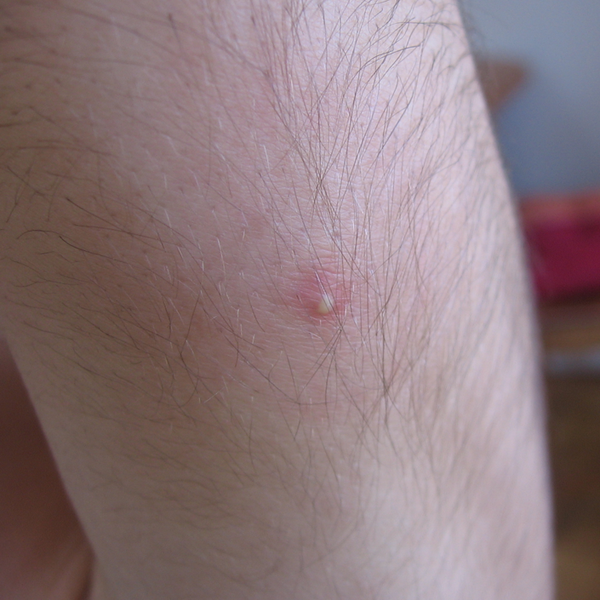Dermatologists Spot Severe Acne Trend In Children; 5 Natural Acne Treatments For All Ages

If you casually catch your preteen child looking in the mirror and trying to pop a zit, don't panic. Children are starting to hit puberty earlier, getting acne well before their teen years, suggests dermatologists. "There appears to be a trend that children are going through puberty at an earlier age, and acne can be the first sign of puberty," Dr. Amy Derick, a dermatologist in Barrington, Ill., told CBS News Boston. Currently, eight out of 10 preteens and teens have acne in the U.S. — approximately 17 million Americans struggle with acne, reports Kids Health.org. Your preteen child is not alone in the battle against acne. Acne has now become common among children as young as seven due to the secretion of sex hormones and the earlier arrival of a girl's first menstrual cycle, says Boston Children's Hospital.
The Rise Of Acne Treatments Among Children
With the increasingly early onset of acne in children, there has been a rise in the number of preteens and teens who seek acne treatments during a visit to their pediatrician. In a study published in the journal Pediatric Dermatology, researchers evaluated the change in pattern in the onset of puberty by determining if acne is becoming increasingly prevalent at an earlier age. The National Ambulatory Medical Care Survey database was used in the study for researchers to analyze acne-based physician visits from children six to 18 years old from 1979 to 2007. The results of the study showed the average age of children seeking medical treatment for acne decreased from 16 to 15 since 1979 to 2007. The finding of the study also supports the early onset of puberty in girls compared to boys.
While the rise of acne treatments among children accounts for the earlier onset of puberty, parents may also be more likely to push their children to treat their acne now rather than later. Early detection of skin diseases has becoming increasingly important with the availability of new technology to determine the cause of skin breakouts. Severe acne during early childhood is a significant risk factor for having severe acne during a child's teen years and possibly well into adulthood. Findings from two studies that dealt with the onset of acne in adolescent boys and adolescent girls suggest that the best way to predict the severity of acne at age 15 is to evaluate how severe the acne in the child at age 10. The earlier acne is tackled, the better your child's skin will look as they get older.
New Acne Treatment Guidelines From Pediatricians
Dr. Lawrence Eichenfield, lead author of the American Academy of Pediatrics (AAP) report, formulated evidence-based recommendations for the diagnosis and treatment of acne in children. The range of approved acne medications by Eichenfield can even clear up severe cases of acne. "For moderate to severe acne, we really have to move towards prescription products to really effectively control the condition," said Eichenfield to CBS Boston. The majority of the products available to aid childhood acne was "off-label" prescriptions, and they have not been tested in patients under 12 years old. However, Eichenfield reassures parents and acne sufferers that these medications are perfectly reasonable to be used among the younger crowd. While topical and oral retinoid medications can be prescribed to children with severe acne, they are known to have unpleasant physical side effects such as :
Photosensitivity
Teeth staining
Hyperpigmentation
Rare lupus like reaction
Dyspepsia
Pill esophagitis
For natural and budget-friendly ways to combat acne, follow the tips below to get beautiful, glowing skin:
Eat Carrots
The vegetable rich in vitamin A and beta-carotene has been linked to preventing acne breakouts due to the retinoids in vitamin A that are often used in prescription acne treatments. Vitamin helps to maintain a healthy immune system and uphold healthy looking skin, especially for acne sufferers. Foods rich in beta-carotene can reduce inflammation due to the antioxidants fighting the free radicals, says the University of Maryland Medical Center (UMM).
More Zinc In Your Diet
According to UMM, taking 30 milligrams of zinc twice a day for a month, and then cutting down to one 30 mg of zinc a day afterward, can decrease the appearance of acne. Zinc is commonly found in seafood like oysters, crab, and lobster.
Apply Lemon Juice
The high acidity levels of lemon juice can help combat bacteria found in acne on the skin. Upon application of lemon juice on the infected areas of the skin, the acne bacteria will begin to break down, says Lemonjuiceforacne.com. Lemon juice can treat scars, blemishes, and even aging marks.
Apply Ice
Using an ice cube to treat the infected area can reduce the inflammation due to the cold contrast on your skin. The ice cube application should not be done for more than five minutes. The size of your pores will shrink because the ice will cause your blood vessels to be confined.
Change Your Pillow Case
Simply changing your pillow case every two or three nights can improve your skin's overall complexion. The pillow absorbs the face's natural oils, which can be reapplied onto your skin every time you sleep on it, promoting bacteria growth on your skin. A clean pillow case, therefore, can mean fewer breakouts, which means clearer skin.



























